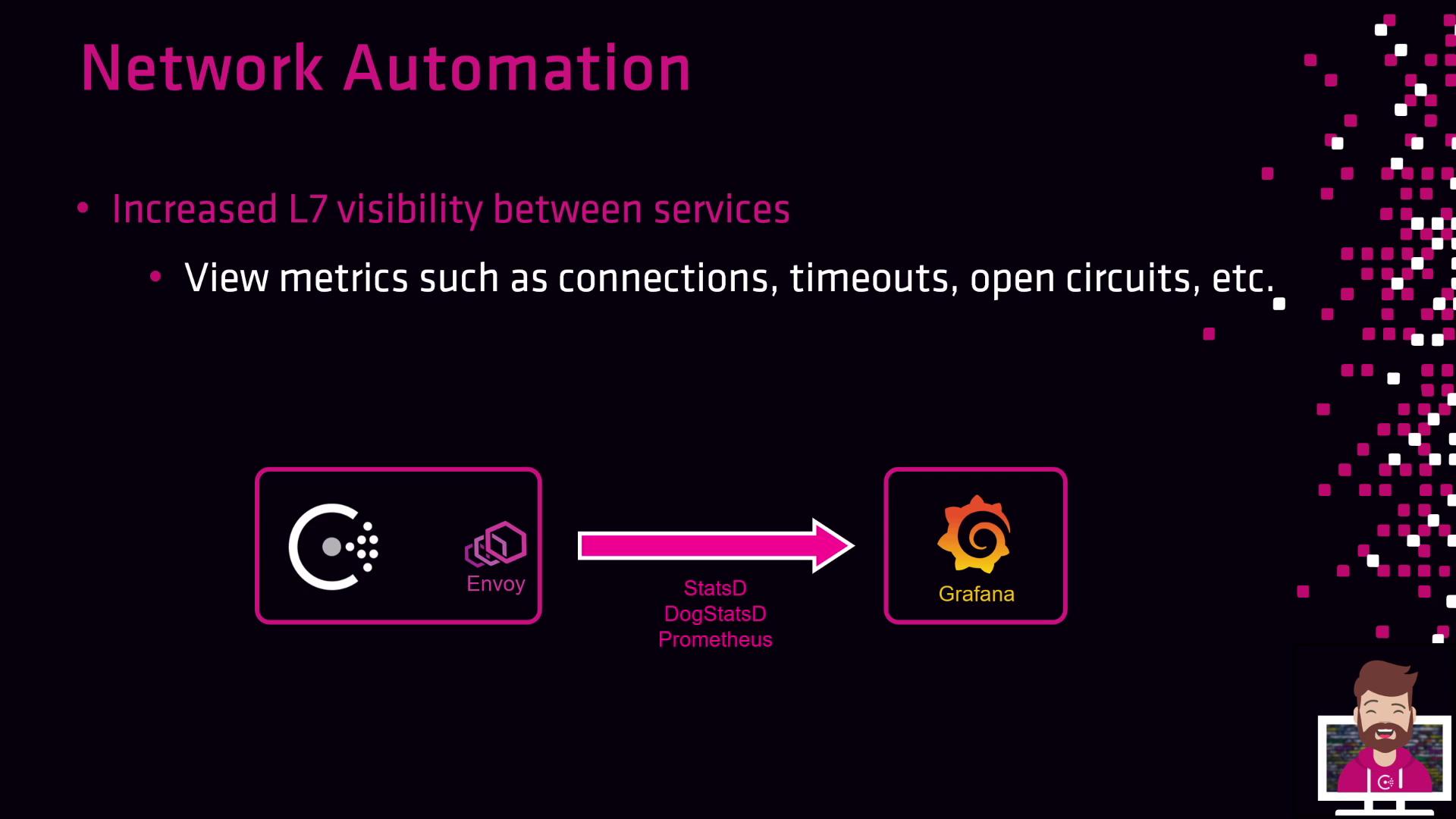HashiCorp Certified: Consul Associate Certification
Explain Consul Architecture
Network Automation
Leverage Consul’s network automation to deliver resilient, observability-driven service traffic management. You’ll learn how to route requests to healthy endpoints, split traffic between service versions, and gain deep layer 7 visibility with Envoy.
Dynamic Load Balancing & Traffic Shaping
Consul automatically routes traffic only to registered, healthy service instances. You can define advanced traffic-shaping policies—similar to a load balancer—to split and steer requests:
- Health-aware routing: Requests go only to passing checks.
- Weighted splits: Distribute traffic (e.g., 80/20) across service subsets.
- Path-based routing: Send specific URLs or HTTP methods to designated backends.
- Failover & multi-cloud: When an availability zone or cloud provider fails, traffic shifts seamlessly to healthy regions or on-premises datacenters.
Note
Consul integrates natively with Envoy for L7 control, and you can extend to F5, NGINX, or HAProxy using built-in connectors.
Integration Partners
| Proxy / Load Balancer | Use Case | Learn More |
|---|---|---|
| Envoy | Full L7 policy & observability | Envoy Proxy |
| NGINX | HTTP/S traffic management | NGINX Docs |
| HAProxy | High-performance L4/L7 routing | HAProxy |
| F5 | Enterprise hardware appliances | F5 Networks |
Service Splitting Example
- Initial state: All traffic routes to
v1.User → Consul → web-app v1 - Canary upgrade: Deploy
v2and validate. - Traffic shift: Apply a
service-splitterpolicy.
Kind = "service-splitter"
Name = "web-app"
Splits = [
{
ServiceSubset = "v2"
Weight = 100
},
{
ServiceSubset = "v1"
Weight = 0
},
]
Warning
Ensure both versions pass health checks before shifting traffic. A misconfigured subset with Weight > 0 and failing health checks will not receive traffic.
Layer 7 Visibility & Metrics
By pairing Consul’s network automation with Envoy’s built-in metrics, you gain real-time L7 insights:
- Connection counts
- Request latencies and timeouts
- Circuit breaker states
You can export these statistics via StatsD, DogStatsD, or Prometheus and visualize them in Grafana:

Further Reading
Links and References
Watch Video
Watch video content